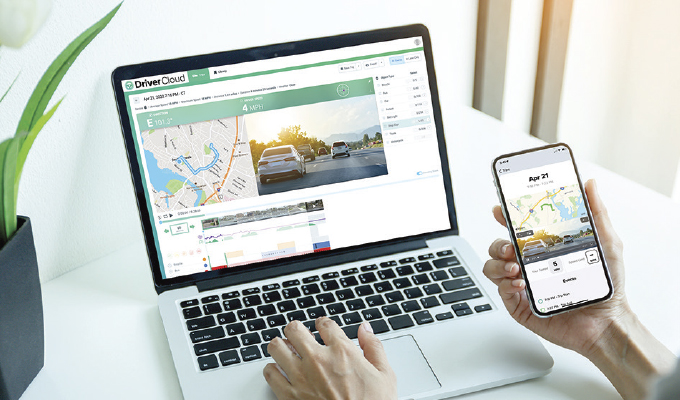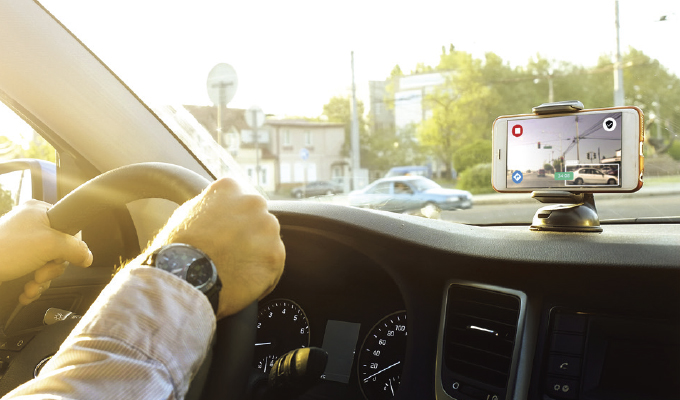Fleets are not all created equal. Large fleets, those with hundreds or even thousands of vehicles, have the means and the incentive to outfit their trucks and vans with tools and technologies that enable advanced capabilities—like location tracking, smart dispatching, and accident recording, along with safety features like collision and drowsy driver warnings.
However, this puts the smaller fleets, like a mom-and-pop plumbing company with six vans or a local moving company with a dozen trucks, at an even greater disadvantage. They’re already dealing with the disadvantages introduced by economies of scale they do not possess, which they work to overcome by providing higher quality, more individualized service. But overcoming the technology gap is more complicated.
Location tracking, for example, can enable smart dispatching and routing. By optimizing routes, fleets can reduce the time it takes to complete a job—which customers love—and increase the number of jobs a single truck can complete in a day. And, of course, it can reduce the amount of fuel consumed, which is a significant advantage given today’s sky-high prices.
Safety is another factor. Collision warning systems, drowsy driver detection, and other safety technologies not only protect people and property but can also result in lower insurance premiums over time as the fleet’s driving record improves. And should an accident occur, accident recording can provide crucial evidence that makes the difference in an insurance claim approval or winning a potentially costly lawsuit.
Many newer vehicles have these technologies built-in by the manufacturer. But fleets can’t replace their vehicles wholesale, especially smaller ones. They need to use the assets they have. And retrofitting is expensive, especially at a time when fuel prices are at historic highs.
ONE FLEXIBLE PLATFORM
Enter the smartphone. While these devices have been designed for consumers, they possess several key features that make them extremely flexible, cost-effective platforms for building business applications, including fleets.
The smartphone is ubiquitous, equipped with a video camera, constant high-speed connectivity, and GPS capabilities. Plus, they have a relatively low cost compared to custom-built vehicle technologies. And because they’ve been developed for consumers, almost every driver will already know how to use them.
Driver Technologies is one such company that’s developed a platform that transforms smartphones and tablets into a mobile driving assistance system and dash cam for fleets. The phone or tablet is affixed to the dash with an inexpensive mount, and there it acts as a dashcam that records fleet trips and analyzes them in the cloud. Additionally, a fleet manager can see all of their vehicles’ dash cams from a single screen and set privacy settings. For instance, the device only records video during a collision or only provides video after a driver gives permission. Plus, it enables safety features such as collision detection and drowsy driver alerts.
But Driver knew that this would not be enough. Because while the dashcam and safety features are valuable, fleets—especially smaller fleets—want to minimize the number of technology vendors with whom they work. The more capabilities a technology company can offer from its platform, the more valuable it becomes to a fleet. But while smartphones are an established technology, building fleet technology services on top of them is still an emerging space. Developing all the capabilities a fleet could want in-house is too expensive and time-consuming for a single company to undertake. As a result, technology companies are driven to partner with other vendors who provide complementary capabilities.

PARTNER POWER
In the case of Driver, the company has partnered with a large number of other vendors. GasBuddy enables fleets access to fuel discounts, for instance. At the same time, NOCELL blocks non-essential apps from being used while driving, and PingLoud enables any text messages a driver receives during trips to be read aloud.
Driver also knew that fleets need roadside assistance and towing services, but, again, it knew that to offer this, it would need to partner with a company specializing in that industry. It was essential for Driver that its tow and roadside partner take full advantage of a smartphone’s location capabilities to ping the nearest qualified tow provider and show that provider’s progress toward the stranded driver in real-time, much like one would see on a rideshare app.
To this end, Driver partnered with HONK Technologies, a company with a network of more than 108,000 service vehicles and employs artificial intelligence and machine learning, to find the closest qualified provider to a driver. Additionally, HONK works with many large insurers to power its roadside assistance services. In the past year, a new digital technology was rolled out to assist with accident scene documentation to speed up the resolution of claims.
Driver’s mission, of course, is to make driving safer, but we know it’s not if an accident will happen but when; therefore, if they do occur, its integration with HONK provides drivers with a guided process for photographing damage to ensure that photos cover the entire vehicle, capturing all damage, and are usable. With this documentation, fleets can accelerate the claims process to settle much more quickly.
The smartphone is a flexible, powerful device that can enable even the smallest fleets to obtain the kinds of safety and insurtech capabilities that have previously only been within the reach of large organizations. And as vendors continue to innovate and partner, the range of technology-powered services will only become more affordable and powerful.
About the Authors
Rashid Galadanci is the CEO and co-founder of Driver Technologies, Inc. Paul Williams is the vice president of business development at HONK. Find out more, visit www.drivertechnologies.com and www.honkforhelp.com.




